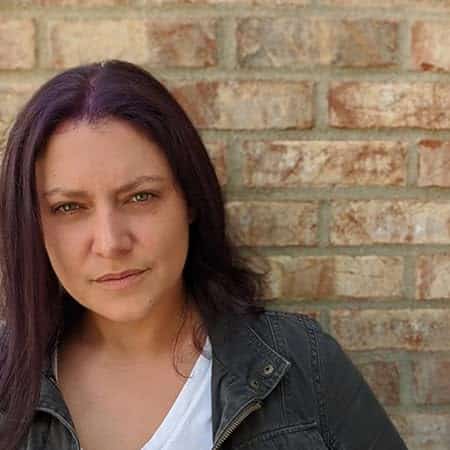Writing a book from one person’s perspective is hard enough. Writing books with multiple perspectives can seem downright impossible. But it can be done.

I wrote my last novel from three different perspectives. It was difficult. Sometimes it was stagnating creatively. But sometimes it was fun and kept me engaged in my own book when I wanted to give up.
So if you’re ready for the challenge, here’s how to write a book from multiple perspectives.
Is Writing a Book in Multiple Perspectives Necessary?
First you need to think about why you need more than one point of view. Just like anything else in your story, writing in this way needs to make sense and have a purpose. It's also a little easier once you're familiar with the point of view options available to you. For a refresher, check out our Point of View guide here.
I wrote about 55,000 words of my last novel in one person’s perspective before I realized I needed to add more points of view to flesh out my world and my characters. Simply put, my main character was no longer in the same realm (literally) as the sub-characters and I needed a way to continue their action and subplots while she was gallivanting elsewhere.
Basic geographic logistics got me to multiple perspectives, but there are a couple other reasons you may want to do the same. Writing in more than one point of view can lead to deeper subplots, a richer world, and can provide a counter perspective from your protagonist.
(One of my points of view is the villain of the story, and it was fun to explore his character, flesh out his backstory, and make him sympathetic through writing from his perspective.)
If you can accomplish all of those goals from one character's perspective, then DON'T write in multiples. It's not necessary and some readers hate it.
Want to see how I handled multiple points of view? My book, Surviving Death, is now published, and you can see for yourself how I switched between points of view. Get the book here »
7 Tips for Writing a Book With Multiple Perspectives
If you think multiple perspectives is the way to go with your novel, here are my top tips to stay sane during the process and keep your readers happy:
1. Use chapter breaks for the switch.
At the very least, use line breaks. Your reader will get confused if you’re bouncing around too frequently or without any indication of a switch. It is possible to switch with a new paragraph, but I don’t recommend it as it's too confusing for your reader and you’ll likely end up head hopping when you don’t mean to.
2. Differentiate the character voices.
All your characters should be unique, but it’s even more noticeable when they’re not if they get their own perspective. Mix it up.
3. Think of your reader.
They should be able to tell whose perspective they’re reading right away. You can make this clear in a few different ways:
- Title the chapter with the character name.
- Write in third person.
- Differentiate character voice so much that it’s obvious.
You don't need to do all three, but you do need to make sure perspective changes are absolutely clear.
4. Each character is the hero of their own story.
This means they must have a story. They need conflict and a character arc of their own. They need their own backstory and motivations.
Don’t cheat them out of a full life because you’re too focused on your main character.
5. Don’t rehash the same scene.
When your characters are together you need to choose which one is best to narrate the scene. When you switch to another character there is no need to go back through the same scene from their viewpoint. That’s unnecessary and boring for your reader.
If you must add what the new character was thinking during a scene, do that in a meditative way in a new scene.
6. Don’t switch between multiple perspectives in a writing session.
You need to get personal with each character and it’s hard to get that deep with one and switch to another immediately. You’ll lose their voice and motivations and you’ll lose your mind trying to keep it all straight.
I recommend either devoting each day to a different character or writing multiple chapters from one character’s viewpoint before backtracking for another character. This will help you stay true to your characters and keep them sounding and acting differently from each other.
7. Keep track of where your characters are.
Pantsers, I hate to tell you this, but you need to make notes and plans if you’re going to write a book in multiple perspectives. Otherwise your characters will oddly teleport from one location to another or you’ll explain something that they already narrated several chapters ago.
This is especially true if you’re writing several chapters from one character’s perspective before switching to another.
You don’t have to get into the incredibly detailed notes that planners sometimes do, but you do need to have some sort of plan to keep track of what’s going on.
Books With Multiple Perspectives Are Not as Scary as They Sound
Writing books in multiple perspectives can be intimidating, but it’s possible and often fun. I had some hiccups along the way, but it was exhilarating to see the plots and characters weaved together when I read through the complete manuscript.
Make sure to take notes and keep your reader in mind and I think you’ll be amazed by the finished product.
What's the hardest part of writing books with multiple perspectives for you? Let me know in the comments!
PRACTICE
Take fifteen minutes to practice writing from multiple perspectives.
Here is the scenario: A mom and her teenage son are getting breakfast together, something they’ve done every Saturday for fourteen years.
Write from the mom’s perspective when they enter the diner and sit down. Then write from the teen’s perspective as they order and eat.
When you’re done, share your writing in the comments. Don’t forget to comment on your fellow writers’ work!
Sarah Gribble is the author of dozens of short stories that explore uncomfortable situations, basic fears, and the general awe and fascination of the unknown. She just released Surviving Death, her first novel, and is currently working on her next book.
Follow her on Instagram or join her email list for free scares.




Thank you for your tips. These are helpful too keep in mind as I finish writing my WIP and move into revising the existing section.